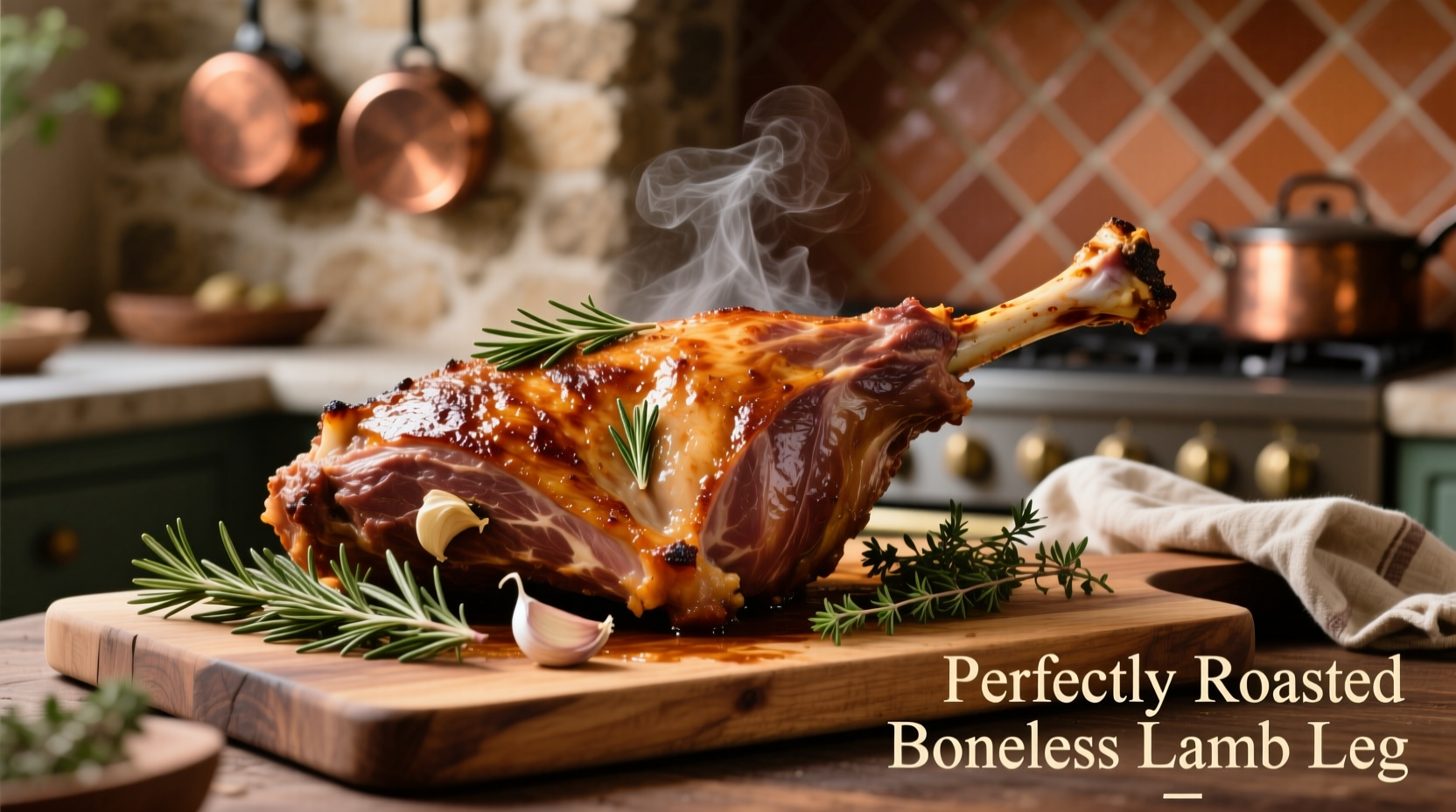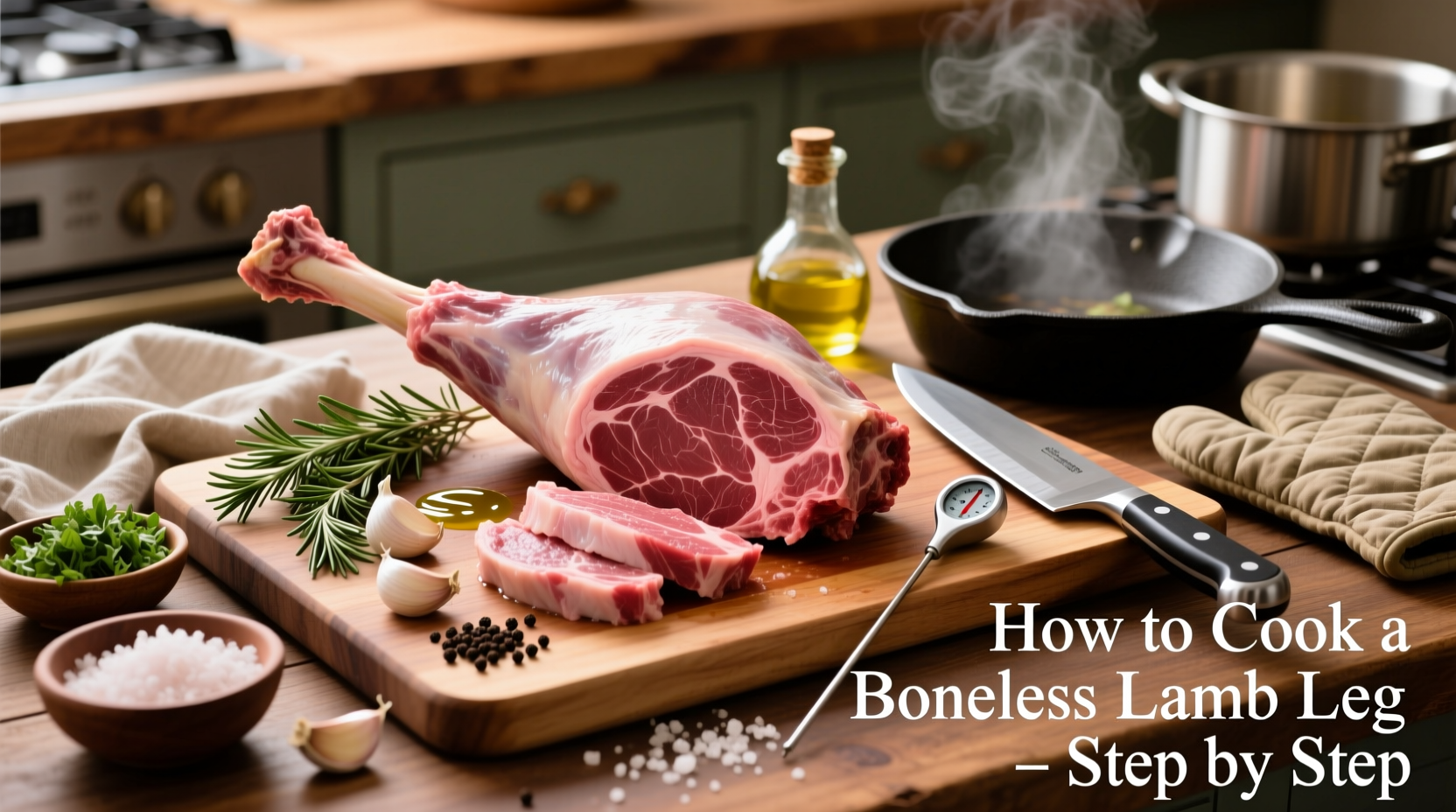The Ultimate Guide to Cooking Boneless Lamb Leg
There's nothing quite like a perfectly cooked boneless lamb leg—tender, juicy, and infused with aromatic flavors. As a versatile cut that's easier to carve than bone-in versions, boneless lamb leg has become a favorite for special occasions and weeknight dinners alike. Whether you're preparing it for a holiday feast or a simple family meal, mastering this cut will elevate your cooking repertoire significantly.
Why Boneless Lamb Leg Deserves a Spot in Your Kitchen
Boneless lamb leg offers several advantages over its bone-in counterpart. Without the bone, heat distributes more evenly during cooking, reducing the risk of uneven doneness. The absence of bone also makes carving simpler and provides more surface area for seasoning penetration. Professional chefs favor this cut for its consistent results and elegant presentation when sliced.
Planning Your Lamb Leg Journey
Successful lamb cooking begins long before it hits the oven. Proper planning ensures optimal flavor development and texture:
- Timing considerations: Allow 24 hours for dry brining (salt application) to enhance flavor and texture
- Temperature equilibrium: Remove lamb from refrigerator 1-2 hours before cooking to reach room temperature
- Portion sizing: Plan for 6-8 ounces per person for a main course
Essential Preparation Checklist
Gather these components before starting your cooking process:
| Category | Essential Items | Optional Enhancements |
|---|---|---|
| Equipment | Roasting pan, meat thermometer, carving knife | Meat tenderizer, roasting rack |
| Base Seasoning | Olive oil, kosher salt, black pepper, garlic | Fresh rosemary, thyme, Dijon mustard |
| Cooking Medium | None required (self-basting) | Red wine, stock, lemon juice |
Step-by-Step Cooking Process
Follow these professional techniques for restaurant-quality results at home:
Preparation Phase (15 minutes)
- Pat the lamb leg completely dry with paper towels—this critical step ensures proper browning
- Create small incisions across the surface for garlic and herb insertion
- Apply 1 tablespoon of olive oil evenly over all surfaces
- Rub with 1½ teaspoons kosher salt and 1 teaspoon freshly ground black pepper per pound
- Insert slivers of garlic and fresh rosemary into the incisions
Cooking Phase (Approximately 2-2½ hours)
- Preheat oven to 325°F (163°C)—lower temperature prevents exterior overcooking
- Place lamb on a roasting rack in a pan, fat side up for self-basting
- Insert meat thermometer into thickest part, avoiding any pockets
- Roast until thermometer reads 125°F (52°C) for medium-rare (approximately 20 minutes per pound)
- Baste with pan juices every 30 minutes for enhanced flavor development
Finishing Phase (15-20 minutes)
- Remove lamb when thermometer reaches 125°F (52°C)—temperature will rise during resting
- Transfer to cutting board, tent loosely with foil
- Rest for 15 minutes minimum—this allows juices to redistribute
- While resting, prepare gravy from pan drippings if desired
- Slice against the grain into ¼-inch thick pieces for maximum tenderness

Temperature Guidelines: The Science of Perfect Doneness
Understanding precise temperature targets transforms lamb cooking from guesswork to a reliable process. The USDA Food Safety and Inspection Service recommends cooking lamb to a minimum internal temperature of 145°F (63°C), followed by a 3-minute rest. However, culinary professionals often prefer lower temperatures for optimal texture:
| Doneness Level | Internal Temperature | Resting Temperature Rise | Visual Characteristics |
|---|---|---|---|
| Medium-Rare | 125°F (52°C) | +5-10°F (+3-6°C) | Pink center, warm red |
| Medium | 135°F (57°C) | +5-10°F (+3-6°C) | Pink throughout, slightly less juicy |
| Medium-Well | 145°F (63°C) | +5-10°F (+3-6°C) | Slightly pink center, firmer texture |
According to the American Institute of Baking's culinary research, the 5-10°F temperature rise during resting occurs due to residual heat continuing to cook the meat's interior—a phenomenon known as "carryover cooking." This explains why removing lamb from the oven at 125°F results in a final temperature of 130-135°F, perfect for medium-rare.
Resting: The Secret to Juicy Results
Skipping the resting period is the most common mistake home cooks make with lamb. During cooking, muscle fibers contract and push juices toward the center. Resting allows these fibers to relax and reabsorb moisture throughout the meat. For a 5-7 pound boneless lamb leg, 15 minutes is the minimum resting time—larger cuts may require up to 30 minutes. Covering too tightly traps steam and softens the crispy exterior, so tent loosely with foil instead.
Serving Perfection: Pairings That Elevate Your Dish
The rich flavor of lamb pairs beautifully with complementary elements:
- Classic accompaniments: Mint jelly, roasted garlic, lemon-dill sauce
- Vegetable pairings: Roasted root vegetables, asparagus, minted peas
- Starch options: Creamy mashed potatoes, roasted potatoes with rosemary, couscous
- Wine selections: Cabernet Sauvignon, Syrah, or a robust Pinot Noir
Troubleshooting Common Challenges
Even experienced cooks encounter issues with lamb. Here's how to address them:
Dry or Tough Meat
Cause: Overcooking or insufficient resting time
Solution: Always use a meat thermometer and remove lamb 5-10°F below target temperature. Ensure proper resting time—never skip this step.
Uneven Cooking
Cause: Irregular shape causing some areas to cook faster
Solution: Tuck thin ends under and tie with kitchen twine to create uniform thickness. Rotate pan halfway through cooking.
Bland Flavor
Cause: Insufficient seasoning or surface drying
Solution: Apply salt 24 hours before cooking for deeper flavor penetration. Ensure surface is completely dry before seasoning for better browning.
Advanced Techniques for Flavor Enhancement
Take your lamb to the next level with these professional methods:
- Dry brining: Salt the lamb 24 hours in advance to improve moisture retention and flavor depth
- Reverse searing: Cook at low temperature first, then finish with high-heat blast for perfect crust
- Herb paste injection: Use a marinade injector for flavor throughout the meat
- Acid balancing: Finish with lemon zest or a splash of vinegar to cut richness
Storage and Reheating Guidelines
Proper handling ensures leftovers maintain quality:
- Refrigerate within 2 hours of cooking in airtight containers
- Consume within 3-4 days for optimal quality
- Freeze for up to 3 months in vacuum-sealed packaging
- Reheat gently in 275°F (135°C) oven until warmed through—avoid microwaving











 浙公网安备
33010002000092号
浙公网安备
33010002000092号 浙B2-20120091-4
浙B2-20120091-4